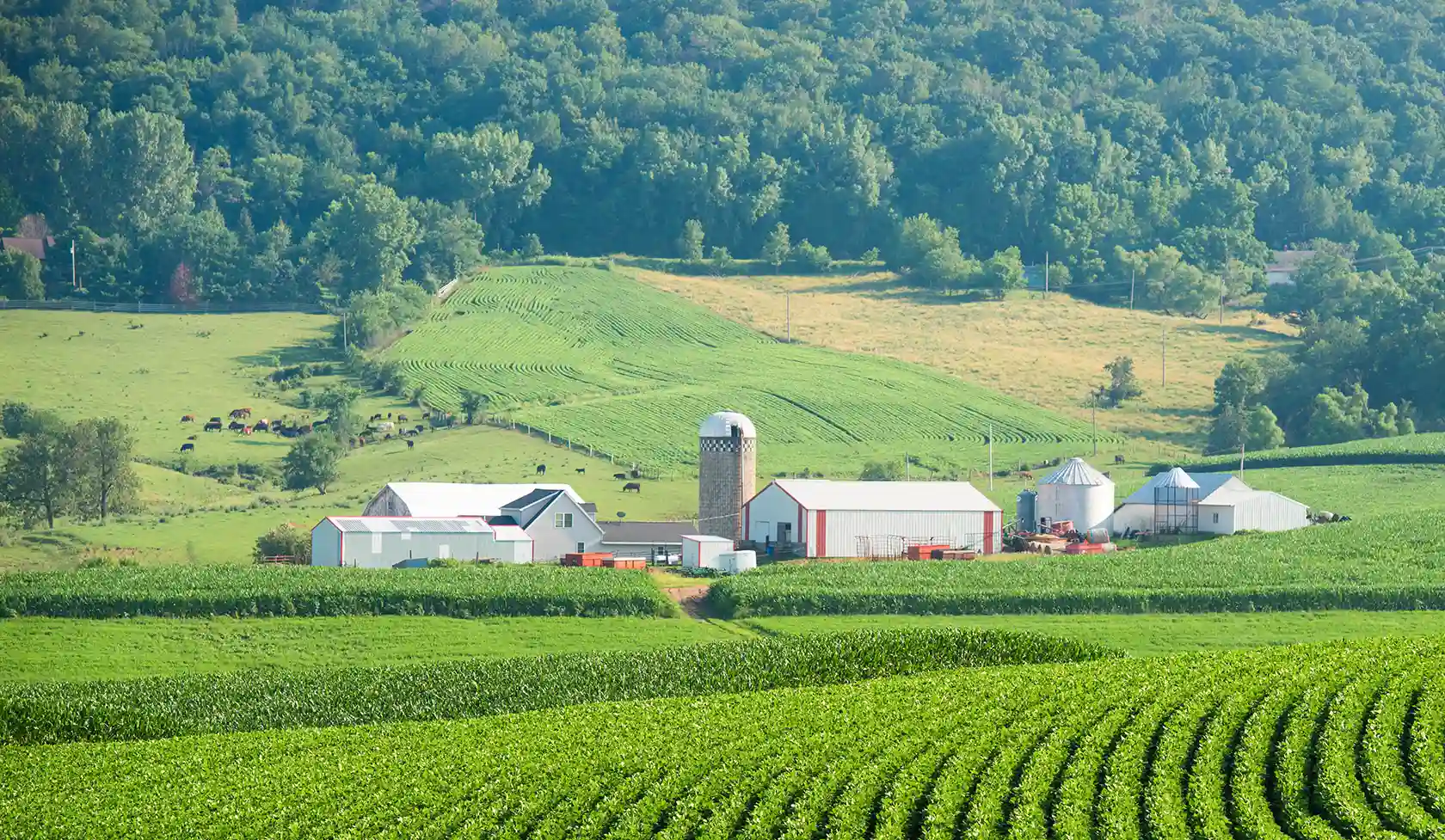
(Photo: Iowa Soybean Association / File Photo)
Despite uncertainty, farmland remains a stable, long-term investment
July 23, 2025 | Bethany Baratta
While crop farmers have seen some bounces in the market since tariffs were announced on trading partners in February, Peoples Company reminds farmland owners and investors that farmland remains a stable investment.
Doug Bear, land agent for Peoples Company, recently pointed out findings in a report published by Peoples Company.
While tariff-related headlines can contribute to financial market volatility, farmland is fundamentally different from highly liquid debt and equity markets, the report shows. As a more illiquid and slow-moving asset, farmland tends to adjust gradually over time.
“The reality is that no one can predict with certainty how tariffs will ultimately affect the market,” Bear says.
While commodity prices—like sub-$4 corn and sub-$10 soybeans—impact near-term profitability, farmland continues to hold value over time.
Net farm income directly impacts future farmland returns; when commodity prices and crop insurance payouts are high, the income of farmland and associated farmland value also appreciate.
“Farmland investing doesn’t offer the instant feedback loop of stock tickers or headline reactions,” the report notes. “Instead, it unfolds in slow motion—an advantage for some, a frustration for others.”
Peoples Company notes that trailing income data and long-term lease structures shape rental rates and land values over multiple seasons.
Land values are largely based on these rental rates and prevailing capitalization (cap) rates, Peoples Company notes. When commodity prices weaken and net farm incomes drop, cap rates tend to rise to reflect increased risk and lower growth expectations. This can put downward pressure on land values, but the adjustment isn’t immediate. Farmland values decline slowly, often taking multiples years to fully reflect weaker income trends, Peoples says.
As tariff discussions continue, economists have raised concerns about rising inflation and the potential onset of stagflation, Bear says. In times of inflation, investors turn to real assets, like gold, which has historically performed well during periods of inflation and economic downturns.
Bear notes that tariff-related pressures have encouraged a surge in gold prices in 2025—up 20% year-to-date.
But gold lacks the income-generating opportunity that farmland provides.
Bear notes that land investor interest remains strong.
“We’ve actually seen an influx of investor money coming into farmland,” Bear says, particularly from family offices and institutions shifting away from less stable real estate sectors like commercial or industrial. Even with lower cash returns (2–3%), farmland offers appreciation and long-term yield potential.
Competition and profit margins
Bear pointed out that interest in land—whether buying or leasing—remains high across generations.
“Our phones are always ringing with people wanting more acres,” he says.
The biggest challenge for younger farmers (often in their 30s and 40s) is financing, he notes. Many don’t have upfront capital, so they start by farming under family ownership or with limited investment exposure.
Rental rates remain steady because of strong demand, but tight crop margins are a growing concern. “All of our input costs have increased,” Bear said, adding that machinery inventories are backing up, which could indicate short-term financial stress in the ag economy. “It gets to be a pretty sharp pencil to figure out profitability per acre.”
Positioning for the next cycle
Though tariffs and geopolitical friction aren’t ideal, history and fundamentals suggest that a crash in farmland values is highly unlikely. In other words: we’re entering a ‘softening phase’, an environment that presents buying opportunities for investors over the next three to five years.
On a bigger picture level, Bear said farmers should recognize their role in providing food, fuel, and fiber—and the need to stay financially informed.
“If you know your true returns and production costs, it really helps when you’re ready to buy or sell land,” he says.
Despite all the unknowns, he remains optimistic: “We’ve got such an opportunity in the ag industry. I think we’re in a better position than we truly think.”
Access the full report here.
Written by Bethany Baratta.
Back